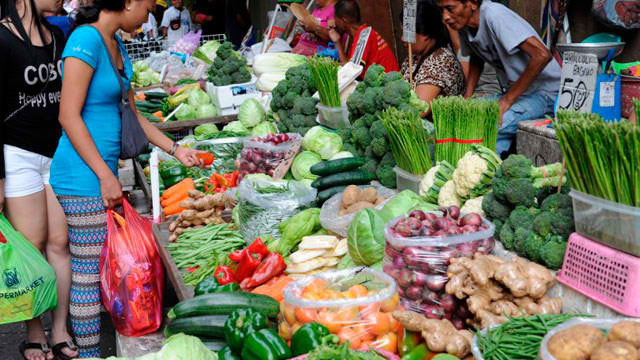SUMMARY
This is AI generated summarization, which may have errors. For context, always refer to the full article.

MANILA, Philippines – Filipinos are eating less and less of vegetables.
Reporting its latest available statistics, the Food and Nutrition Research Institute of the Department of Science and Technology (FNRI-DOST) said that from 1978 to 2008, there has been a decline in vegetable consumption among Filipinos.
People who lack vegetables in their diets may unknowingly suffer from micronutrient malnutrition because of low levels of vitamins and minerals. These may be substituted with supplements, but nothing beats the nutritional benefits of the real thing.
Vegetables are an important part of a healthy and balanced diet. Not only are they nutritious, they are also accessible and easy to prepare.
They are good sources of important nutrients such as potassium, fiber, vitamins A, E, and C.
Including vegetables in one’s diet can help in lowering risks of having health problems such as heart diseases, intestinal ailments, and vision impairment.
‘Indigenous’ veggies
The Philippines is gifted with a myriad of fruits and vegetables, which are often unappreciated.
FNRI-DOST promotes the use of what it calls indigenous vegetables (IVs), saying that “these vegetables grow abundantly in rural areas and not everybody is aware of their value as food.”
To address the issue, FNRI-DOST developed a recipe book on IVs.
The recipe book entitled “Lutong FNRI: Mga Katutubong Gulay,” published in 2013, aims to help parents, health workers, and menu planners in preparing affordable and nutritious meals that are also appealing to the Filipino palate.
The recipes showcased the many wonders, flavors, and colors of vegetables, such as alugbati, alukon, katuray, kulitis, kadyos, kalabasa, labanos, labong, malunggay, mustasa, pako, patola, pipino, saluyot, sayote, sigarilyas, sitaw, talinum, talong, and upo.
A total of 30 recipes included vegetables used as soup, salad, side dish, viand, and even dessert.
The recipe book is available in the FNRI-DOST library and will soon be featured on their website.
Start eating healthy and spending wisely. All it takes is a bit of imagination, a basket of vegetables, and a good appetite. – Rappler.com
Add a comment
How does this make you feel?
There are no comments yet. Add your comment to start the conversation.